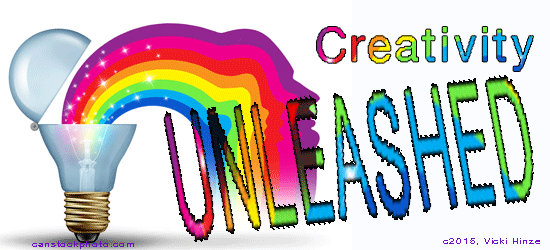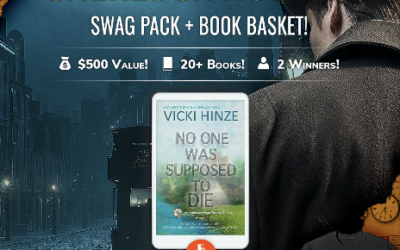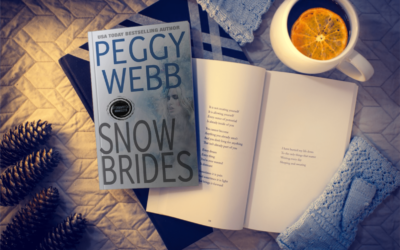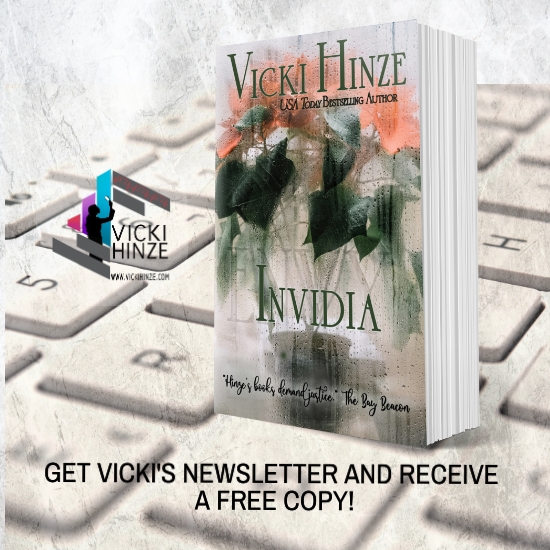CREATIVITY UNLEASHED: Mixing Up Methods
By
Vicki Hinze
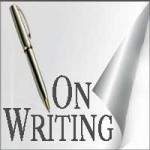 Call it spring fever. Call it getting bored with methodology. Or functioning on auto-pilot and not being fully engaged. Call it whatever you like, but when you do something—anything—repetitively the same way, with time, the method drains enthusiasm. It becomes routine. Same old same old.
Call it spring fever. Call it getting bored with methodology. Or functioning on auto-pilot and not being fully engaged. Call it whatever you like, but when you do something—anything—repetitively the same way, with time, the method drains enthusiasm. It becomes routine. Same old same old.
In normal life, we can find that comfortable and consider that “sameness” a good thing. But when we’re involved in anything creative, that repetitiveness breeds apathy, and apathy leashes creativity.
So we have to do something to unleash creativity. We might like the results of our current method, but unless we infuse them with something that sparks a fresh burst of enthusiasm, we aren’t tapping into the full potential of our creativity. The proverbial muse is muzzled. When leashed, the creative process becomes mundane and ordinary, and that denies us access or entry to the creative realm where magic comes out to play.
Even if your current methods produce well, you still want to mix things up to keep the process fresh, giving creativity room to stretch its leg and run free. The smallest of changes can create huge results. Let me get into the practical and share a working-writer example.
Anyone who’s read my articles for any length of time knows I’ve had major eye challenges. That I typically work on four books at a time. That I can no longer read more than a few pages at a time on paper.
#1 Mix Up: I changed the way I read. Switching from paper to eBooks made a dramatic difference in my life. I can read a lot more at a time, read faster, and I don’t get whiteout (where the ink disappears and all I see is a white page) or jiggling letters (because my eye muscles lose control).
That was a miracle find for me. Yes, I do miss the feel of a book in my hands. But I’d rather hold an eReader and actually get to read than hold a book I can’t read. While hard at first, now I’m used to the eReader and I love how much more reading I can do. What changed? My attitude, mostly. Necessity drove me to switch. Gratitude holds me to stay switched. (And another perk: I can adjust the font so that on days when it’s tough, I can adjust the font instead of how much I can read.)
#2 Mix Up: Writing four books at a time. Bluntly put, I had to give up working on four books at a time. I’d done that my whole writing career, but the eyes made focusing a challenge and, for the first time, I had trouble working and switching from book to book. So now I focus on one book and keep an idea file on the others on my desktop. When something germane to one of the other books pops up, I drop a note into its file so the content isn’t lost. This was a pretty big adjustment, focusing on one story at a time, but by noting the other story tidbits, partial scenes, etc. as they come to me, I don’t lose the gems. They’re waiting for me when I switch to that book.
Another benefit of this mix up is that it eliminates that “new book syndrome.” You know the one I mean. When you finish a book and let go of known characters and plot and start with a fresh group. That mental shift from the familiar to the still fuzzy and new has a lot of writers stumbling until they settle into the new book and its cast and plot. Well, if you’ve got an idea file full of notes on the new book, that shift to a new project is more like coming back to those characters and that plot. A big adjustment is avoided, and you’re familiar. Why? Because all those ideas have your subconscious mind already working, pulling threads and fusing ideas into a cohesive whole. This is a huge perk.
#3 Mix Up: I don’t use the word problem often. Most problems are opportunities, even if they’re well disguised. But this next particular challenge, eye challenge, was a huge problem for me. When writing on the computer—which I have to do now because of the paper whiteout—I developed an additional whiteout challenge.
For most of my writing career, I’ve written between 25 and 50 pages per day. (A lot of it never reaches print, but I don’t edit as I write. I go with whatever comes.) So whether or not it reaches print is immaterial. That kind of page count is a pretty high production rate that allowed me to write a fair number of books per year. Well, after a bunch of the eye surgeries, and then some more, my production rate naturally shrank to half or less.
Last year, it shrank more. I could write 4 – 5 pages on the computer and then the letters would start jiggling. Not long after that, I’d get whiteout. Staring at the proverbial blank page on the computer screen (like on paper).
The jiggling was due to thickening eye muscles. (Read that repetitive back and forth across the page for years and the muscles thickening.) Thickened, the muscles don’t function as well. So they struggled to focus and that caused two things: jiggling letters and nausea.
The whiteout comes from intense focus and brightness.
A method mix up was required. But to what? Dimming the screen didn’t work. Dragon, or dictation, didn’t resolve the issue. I needed to alter something else.
I use Word for creating and discovered that I could change the background to blue and the text to white. I have to tell you, that threw me because it was visually different, and visually different seemed intrusive. I didn’t much like the intrusion, but I thought the reason was more personal bias than true challenge. The blue, for me, was just too bright, and I associate blue with depression and “feeling blue.” I absolutely hated that association, but it’s been incorporated in my mind for eons. Tough to change.
Needing an alternative, I dug around Word a bit and found publishing layout and templates and I changed the background of the page to a deep gray and the text to white. That immediately felt easier on my eyes and, being neutral, it didn’t intrude. I cannot tell you how excited I was by this.
I’ve used that new method—white on gray—for over 100 pages now. It’s hard to see the cursor (I haven’t yet figured out how to make it light so I can easily see it on the gray) but that aside, this mix up hasn’t been at all jarring. In fact, yesterday, for the first time in a very long time, I produced at a decent rate. Edited about 70 pages and wrote 24 new pages.
It’s been a very long time since I could write 24 pages in a day, and longer since I could do it without paying dearly for it.
The miracle is the method mix up worked. After doing all that editing and writing, my eyes didn’t hurt. On leaving the computer, I could focus and actually see.
That was such a mood lifter… I can’t begin to explain. But I can tell you this: I woke up this morning feeling fantastic and so eager to get back to the story. I couldn’t wait!
That is the true miracle. Being able to focus on the story and not on how much I could accomplish before I’d run out of eyes for the day.
Now maybe you don’t have eye challenges. Maybe you’re blessed with fantastic vision and eye strain isn’t a part of your life. Maybe it doesn’t dictate what you are capable of doing or not. Regardless, here are two tips I hope you’ll heed:
- Take care of your eyes. Everyone in this business, sooner or later, suffers from eye strain. Maybe not the heavy-duty challenges I have (those are thyroid related, not eye related) but eye strain eventually gets to everyone in the industry. So …
- At regular intervals during your day, stop working and focusing on close ups. Look out on distant objects. Get up and move away from the computer and look away. Do this frequently. Your eyes will thank you for it.
- Use moistening drops. Refresh or Systane or a similar product. Use them throughout the day. Why? Because when we compute, we tend not to blink. Our eyes get dry. And dry eyes can cause more challenges than you can imagine. Keep them lubricated. If you don’t keep your eyes lubricated, you can bet you’ll come to regret it.
- Mix up your methods. Try new things. Try new ways of doing things. Don’t ever get set on doing anything one way. There are two reasons that’s a bad idea:
- You could miss a better way.
- If your one way suddenly stops working or isn’t available to you, you’re stuck. You then have to first convince yourself that you’re capable of accomplishing what you want to accomplish another way, and then you have to make the attempt and the adjustments required to do it. That’s far more difficult than being open and flexible and trying new things all the time. You’re used to change. Your mind is open to it as normal, and that makes it and your creativity more flexible.
A side-story. I once had a writing friend who could not write except in longhand with a specific purple ink. The manufacturer quit making it. She had serious challenges in making the shift to a different purple. For her, this is was not a small thing. It was huge.
Another friend had to have a specific kind of notebook to write any first draft. That was fine until she couldn’t get the notebooks anymore. That notebook was again, significant to her, and that made it significant to her creativity. She shopped for months to find another kind of notebook that sparked that same creative sense in her. When she found it, she bought two cases, figuring that would be enough notebooks for the rest of her life.
We all have our quirks. Whether a specific purple ink or a certain kind of notebook, we need what we need. Not a thing wrong with that. But both of these cases make the benefits of expanding our needs to fit within a base with the broadest of perimeters.
Broad perimeters make for more choices. Narrow perimeters make for few choices and more challenges. Solution? Mix it up. Start that way and stay that way. Not just because you have to but because you want to unleash creativity and have as few impediments to it as possible.
Developing a method for doing things can be a benefit. It allows us to do mundane tasks that are repetitive without a lot of focus. There are things in our lives where that’s helpful and it frees our minds to wander and daydream while we’re doing them.
Unfortunately, that brings increased risks of injury and damage, too. But in some things, those risks are decidedly minor and we can afford to take them on.
Writing is not among that group of low-risk tasks. In it, our creative muse needs freedom and flexibility. Opting for set methods can be useful in providing that, but it can also impose limits on creativity that are not welcome and can anesthetize it.
When our creativity is limited—not focused or channeled, but limited—it backs us into corners and we’re stuck and must fight our way out of them. The writing suffers for it. The writer suffers for it.
So mix up your methods, knowing that, like me, you’ll need to give yourself time to adjust. New endeavors always require adjustments. But once you have, look out. You might just find your miracle.
That is what happens when creativity is unleashed!

